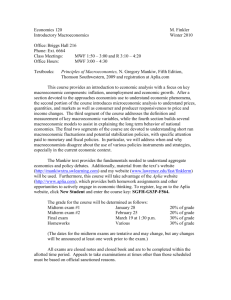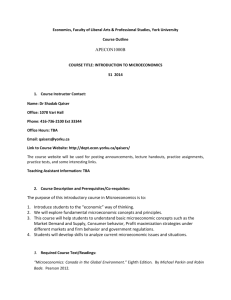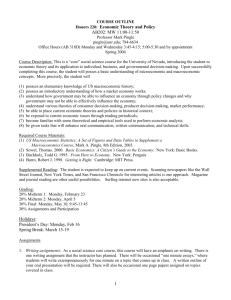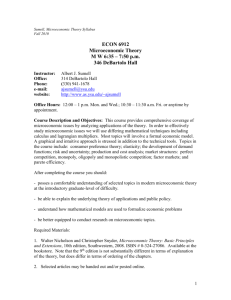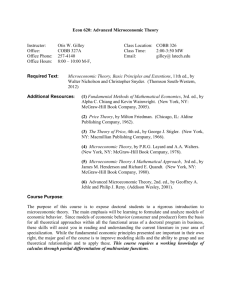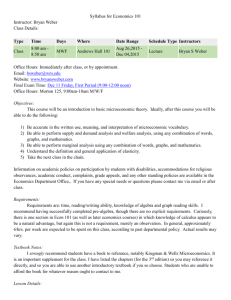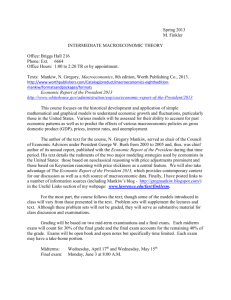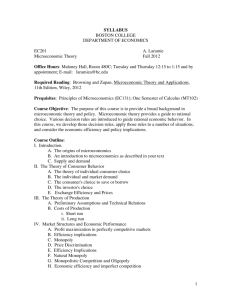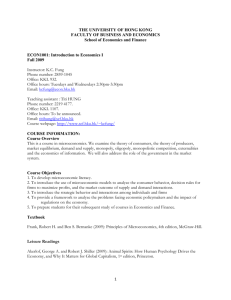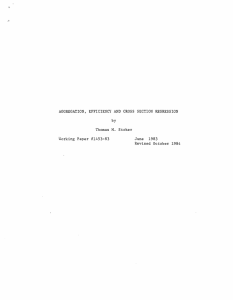(3) Wall Street Journal
advertisement
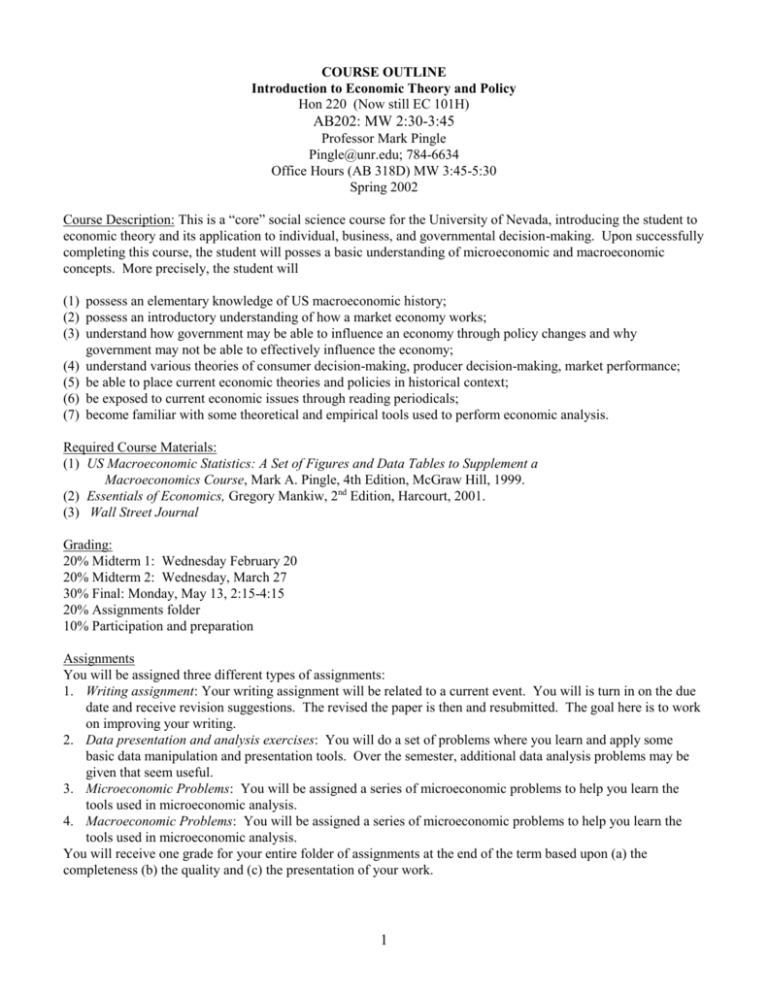
COURSE OUTLINE Introduction to Economic Theory and Policy Hon 220 (Now still EC 101H) AB202: MW 2:30-3:45 Professor Mark Pingle Pingle@unr.edu; 784-6634 Office Hours (AB 318D) MW 3:45-5:30 Spring 2002 Course Description: This is a “core” social science course for the University of Nevada, introducing the student to economic theory and its application to individual, business, and governmental decision-making. Upon successfully completing this course, the student will posses a basic understanding of microeconomic and macroeconomic concepts. More precisely, the student will (1) possess an elementary knowledge of US macroeconomic history; (2) possess an introductory understanding of how a market economy works; (3) understand how government may be able to influence an economy through policy changes and why government may not be able to effectively influence the economy; (4) understand various theories of consumer decision-making, producer decision-making, market performance; (5) be able to place current economic theories and policies in historical context; (6) be exposed to current economic issues through reading periodicals; (7) become familiar with some theoretical and empirical tools used to perform economic analysis. Required Course Materials: (1) US Macroeconomic Statistics: A Set of Figures and Data Tables to Supplement a Macroeconomics Course, Mark A. Pingle, 4th Edition, McGraw Hill, 1999. (2) Essentials of Economics, Gregory Mankiw, 2nd Edition, Harcourt, 2001. (3) Wall Street Journal Grading: 20% Midterm 1: Wednesday February 20 20% Midterm 2: Wednesday, March 27 30% Final: Monday, May 13, 2:15-4:15 20% Assignments folder 10% Participation and preparation Assignments You will be assigned three different types of assignments: 1. Writing assignment: Your writing assignment will be related to a current event. You will is turn in on the due date and receive revision suggestions. The revised the paper is then and resubmitted. The goal here is to work on improving your writing. 2. Data presentation and analysis exercises: You will do a set of problems where you learn and apply some basic data manipulation and presentation tools. Over the semester, additional data analysis problems may be given that seem useful. 3. Microeconomic Problems: You will be assigned a series of microeconomic problems to help you learn the tools used in microeconomic analysis. 4. Macroeconomic Problems: You will be assigned a series of microeconomic problems to help you learn the tools used in microeconomic analysis. You will receive one grade for your entire folder of assignments at the end of the term based upon (a) the completeness (b) the quality and (c) the presentation of your work. 1 Course Syllabus Codes: CH = Chapter in Mankiw book. S = Statsbook Figure. Date 1/23 1/28 1/30 2/4 2/6 2/11 2/13 2/18 2/20 2/25 2/27 3/4 3/11 3/13 3/18 3/20 3/25 3/27 4/1 4/3 4/8 4/10 4/15 4/17 4/22 4/24 4/29 5/1 5/6 5/8 5/13 Topic Reading and Assignment Due Dates An illustrative class experiment None Assignment Given: Writing Assignment An overview of Economics CH 1-2 Gains from trade CH 3 Modeling a market CH 4; Writing Assignment Due Elasticity CH 5 Role of Government in Markets CH 6; Folder Check 1 Some data on government involvement S5-S6, S9-S10, S33-S43 President’s Day: No Class None First Midterm None Markets and Efficiency CH 7 Taxation and Efficiency CH 8 International trade and efficiency CH 9 Externalities CH 10 Public goods CH 11 Production CH 12 Competitive markets CH 13; Folder Check 2 Monopoly CH 14 Second Midterm Spring Break: No Class Spring Break: No Class Measuring production and inflation CH 15-CH16, S1-S4, S20-S21 Assignment Given: Stats-book Appendix B Problems Production and growth CH 17; S7-S12 Saving and investment CH 18; S13-S18 Unemployment CH 19; S23, S25-S28 Money and the Federal Reserve CH 20; S29-S31 Money growth and inflation CH 21; S32 The product market (plus labor market) CH 22 Monetary and fiscal policy CH 23 Explaining economic history None Prep Day: No Class Final Salient Economic Ideas 2 1. Opportunity cost 2. Specialization and trade 3. Trade is mutually beneficial 4. Price system 5. Burden of debt 6. Availability of credit 7. Production and its relationship to income and wealth 8. Law of diminishing returns 9. Competition and its relationship to technological improvement 10. Classical theory of income distribution 11. Inflation tax 12. Effect of inflation on debtors and creditors 13. Importance of saving 14. Investment versus saving and why investment is important 15. Principles of insurance 16. Autonomous spending multiplier 17. Time Value of Money 18. Elasticity 19. Marginal change versus average change 20. Efficiency: Productive and allocative 21. Externality 22. Public good 3
